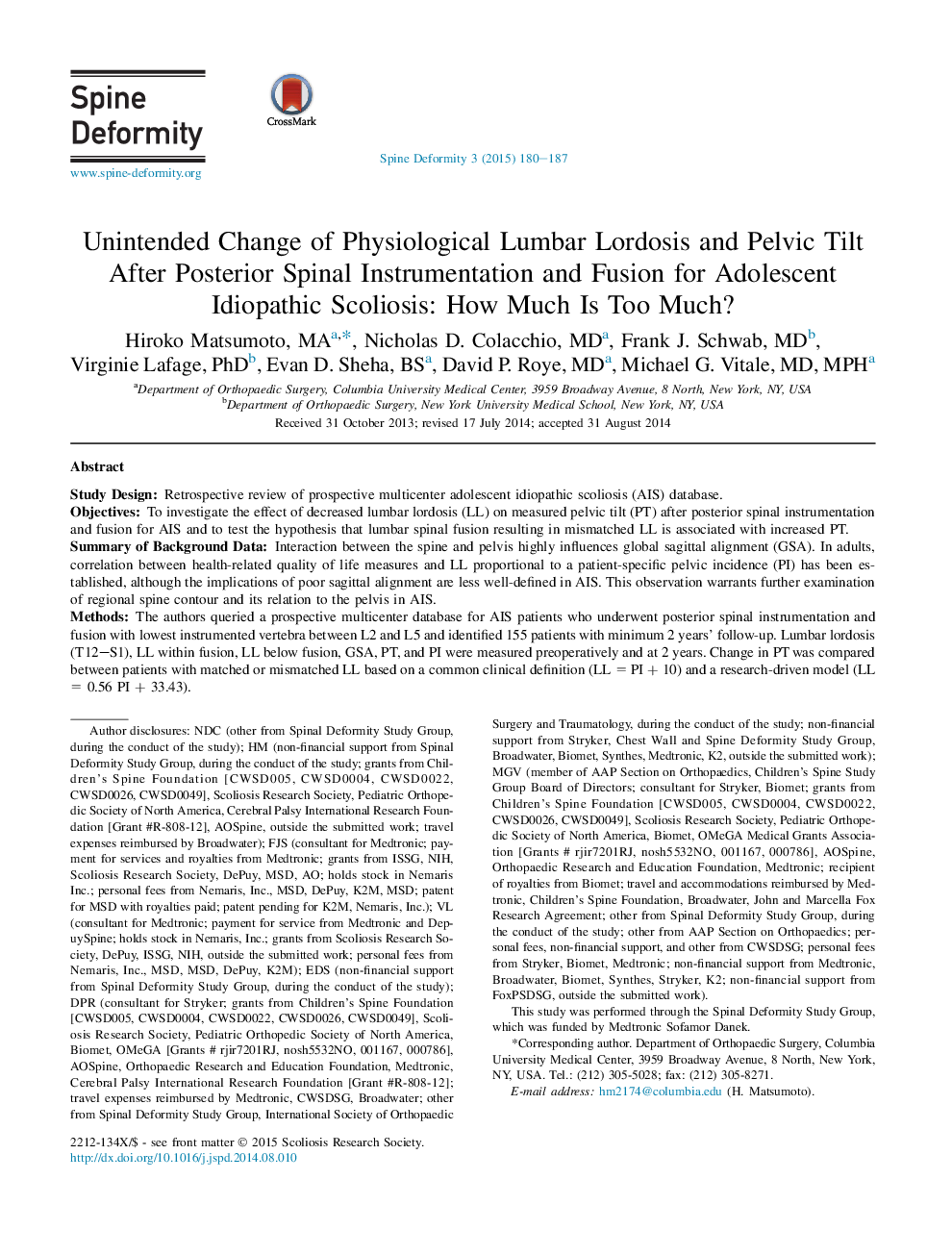| Article ID | Journal | Published Year | Pages | File Type |
|---|---|---|---|---|
| 4095572 | Spine Deformity | 2015 | 8 Pages |
Study DesignRetrospective review of prospective multicenter adolescent idiopathic scoliosis (AIS) database.ObjectivesTo investigate the effect of decreased lumbar lordosis (LL) on measured pelvic tilt (PT) after posterior spinal instrumentation and fusion for AIS and to test the hypothesis that lumbar spinal fusion resulting in mismatched LL is associated with increased PT.Summary of Background DataInteraction between the spine and pelvis highly influences global sagittal alignment (GSA). In adults, correlation between health-related quality of life measures and LL proportional to a patient-specific pelvic incidence (PI) has been established, although the implications of poor sagittal alignment are less well-defined in AIS. This observation warrants further examination of regional spine contour and its relation to the pelvis in AIS.MethodsThe authors queried a prospective multicenter database for AIS patients who underwent posterior spinal instrumentation and fusion with lowest instrumented vertebra between L2 and L5 and identified 155 patients with minimum 2 years' follow-up. Lumbar lordosis (T12–S1), LL within fusion, LL below fusion, GSA, PT, and PI were measured preoperatively and at 2 years. Change in PT was compared between patients with matched or mismatched LL based on a common clinical definition (LL = PI + 10) and a research-driven model (LL = 0.56 PI + 33.43).ResultsThirty-eight percent of patients had decreased LL from before surgery to 2 years after surgery. These patients had significantly higher rates of increased PT (73%) than patients without decreased LL (40%). Multivariate regression demonstrated that change in LL, LL within fusion, and GSA had a significant predictive effect on PT (p < .001). Using either definition of LL, patients with LL less than 2 standard deviations from predicted values were more likely to have increased PT.ConclusionsIatrogenic loss of LL commonly occurs in spine fusion for AIS and is associated with a reciprocal increase in PT. As such, spinal fusion in AIS can have unintended effects on sagittal alignment with currently uninvestigated potential consequences in the future.
